A Brief History And A Vision For The Future
1University of Santo Tomas Hospital Section of Urology; East Avenue Medical Centre Department of Urology; V. Luna Medical Center Department of Surgery2 Veterans Memorial Medical Center Department of Urology; National Kidney and Transplant Institute Department of Urology
Urology is the surgical subspecialty focused on the urinary tract and the male genitalia. Under its umbrella is a very broad field that includes cancer surgery of the urinary tract, kidney stones, prostate diseases, infertility, and sexually transmitted infections among others. The Philippine Urological Association was founded in 1957 and has since then grown into a strong organization with more than 400 practicing urologists in the country. With the development of the various fields of urology, subspecialty societies like the Philippine Society of Urological Oncology (PSUO) and Philippine Alliance for Urolithiasis (PAU) were eventually established.

Phil. Society of Urological Oncologists (1); Philippine Society of Pediatric Urology (2); Philippine Alliance For Urolithiasis (3)
T h e s e s p e c i a l t y s o c i e t i e s r e c o g n i z e d t h e r a p i d development of treatment modalities in their respective fields and thus aimed to promote these new discoveries. Left in the background was the field of reconstructive urology, which in 2010, during the PUA Midyear Convention in Cebu City, was voted by the attendees as the m o s t h a t e d u r o l o g i c a l
subspecialty. Urethroplasty was voted as the most hated operation by virtue of its
technical complexity, low success rate, and troublesome follow up course.
The Changing Scenario of Urethral Stricture Management
The true incidence of urethral strictures in the Philippines is unknown because of the scarcity of locally published epidemiological studies. In the US, Santucci et al (2006) showed that the prevalence of urethral stricture disease ranged from 229 to 627/100,000 males, with the propensity to affect males who are over 55 years of age1. In developing countries such as the Philippines, recently reported data showed that 48.5% of strictures measured 2-7cm in length, and 55% were located in the bulbar urethra2 and are thus ideal candidates for urethroplasty.
While it was previously believed that “once a patient had a stricture, he will forever have that stricture”, the current opinion is that stricture disease is indeed curable. The basic treatment options for stricture disease consists of urethral dilatation, internal urethrotomy, stunting, and open reconstructive surgery. The current gold standard for stricture treatment is open urethroplasty due to its high success rate and low recurrence rate compared to internal urethrotomy. Unfamiliarity with the different urethroplasty techniques and the tendency to fall into the trap of using the much easier internal urethrotomy has severely stunted the growth of the practice of reconstructive urology among Filipino urologists.
Compared to other countries, even in Southeast Asia, the Philippines has lagged behind in both in terms of the number of reconstructive surgery operations performed and the number of trained reconstructive urosurgeons.
THE EARLY YEARS
In the late 70’s. Dr. Lester Garcia, an alumnus of the University of the Philippines – Philippine General Hospital, published and presented several papers about reconstructive urology including the paper “Modification of the First Stage Urethroplasty For Deep Urethral Strictures”3. He brought his expertise to the East Avenue Medical Center where he started teaching, and later on became the chairman of the Department of Urology. The recognized Father of Modern Philippine Reconstructive Urology is Dr. Eduardo Gatchalian, who trained at the Royal London hospital under John Blandy in the early 1980’s. Coming back from his fellowship training from the United Kingdom, he became part of the Urology Consultant Staff of the University of the Philippines – Philippine General Hospital Department of Surgery, eventually becoming the Department Chairman as well as the President of the Philippine Urological Association and the Philippine College of Surgeons.
Dr. David Bolong is a pediatric urologist by profession who did his fellowship training in William Beaumont Hospital in Royal Oak Michigan. He came back to the Philippines and was accepted as part of the Urology Consultant Staff of the University of Santo Tomas Hospital, Department of Surgery. Like Dr. Gatchalian, he eventually rose through the ranks to eventually become the Head of the Section of Urology at both the UST Hospital and Philippine Children’s Medical Center. Recently, he was appointed to the position of Chairman of the UST Hospital Department of Surgery.
Doctors Garcia, Gatchalian and Bolong have performed the most number of urethroplasty cases in the country.

The overwhelming winner in the poll was urethroplasty for a variety of reasons. First, only a few general urologists knew how to perform urethroplasty, which was a very complex procedure. Second, the success rate of urethroplasty in the country, although anecdotal, was very low. Patients often came back to their urologist with stricture recurrence. Sometimes the patient was forced to perform CIC on a regular basis, after surgery, which greatly affected his quality of life and thus overall patient satisfaction. This translated into a troublesome postoperative course for both the surgeon and the patient. Third, urologists have fallen in love with the relative ease of performing an endoscopic procedure such as DVIU with no need for specialized training. Fourth, the residents themselves found no strong motivation to learn how to perform urethroplasty as the Philippine Board of Urology only required residents to have performed 2 cases prior to graduation from residency. And lastly, many patients themselves have accepted their fate and have learned to live their lives with having a suprapubic tube permanently inserted into them. This situation did not give the attending urologist any more motivation to advise further treatment since the patient was already content with his current situation.
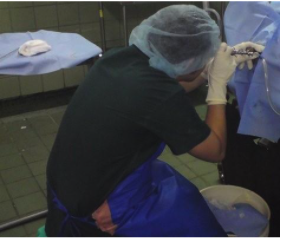
Rediscovering Reconstruction
The first building blocks to rebuilding the reputation of reconstructive urology in the Philippines came in the form of three young urologists.
Dr. Mark Abalajon, an alumnus of the UP-PGH residency training program, was formally trained in urologic oncology but also went to Pune, India (2017) to learn reconstruction from Professor Sanjay Kulkarni at the Kulkarni Institute. He brought with him Dr. Michael Alfred Tan, then the chief resident at the University of Santo Tomas Hospital. After coming back to Manila and upon the advise of Dr. Bolong, Dr. Abalajon decided to shift his focus to reconstructive urology to serve the large number of patients in country who were in need of surgical treatment. He later aligned himself with three training institutions; University of Santo Tomas Hospital, V. Luna Medical Center, and the East Avenue Medical Center.
At around this time, Dr. Patrick Matias, another UP-PGH alumnus, finished his training scholarship under the Societe Internationale d’Urologie (SIU) in Reconstructive Urology at the University College Hospital at Westmoreland Street in London, United Kingdom under the tutelage of Professor Anthony Mundy. He also had the privilege to learn from another giant in the field of reconstruction, Miss Daniela Andrich. Upon coming back to Manila, Dr. Matias became a visiting consultant at the National Kidney and Transplant Institute and the Veterans Memorial Medical Center. He and Dr. Abalajon then started working together to establish a plan to bring back reconstructive urology into the attention of the general urology public.
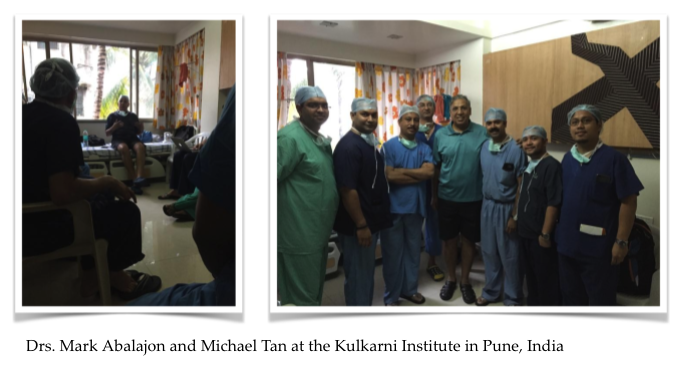
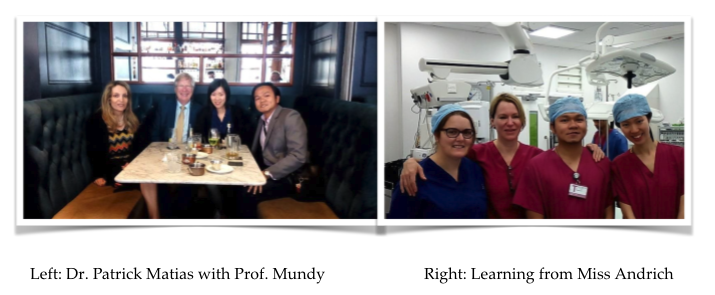
Renaissance of Reconstruction
The first official masterclass in pelvic reconstruction was held during the 2018 Philippine Urological Association Annual Convention, and was conducted by Drs. Satyagraha, Matias, and Abalajon. Philippine Urology was reintroduced to reconstruction. At the time, interest in reconstruction was still lukewarm at best but the seeds were planted for future endeavors.
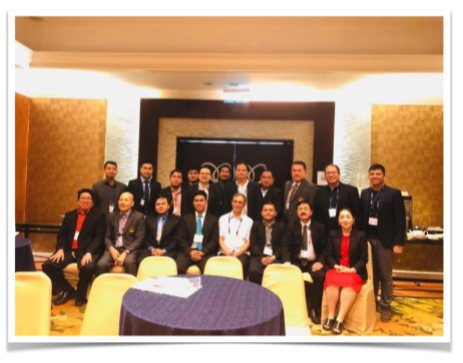
In 2019, the Philippine Urological Association sent its the first ever batch of delegates to the International Society of Reconstructive Urology Annual Convention (Bali, Indonesia) where they were introduced to some of the biggest names in the international field of Reconstructive Urology. During this meeting, Dr. Matias gave a lecture on the current state of reconstructive urology in the Philippines.
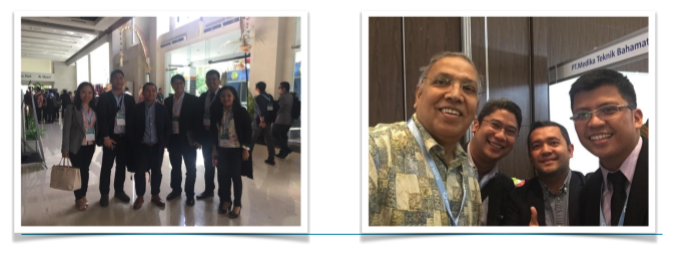
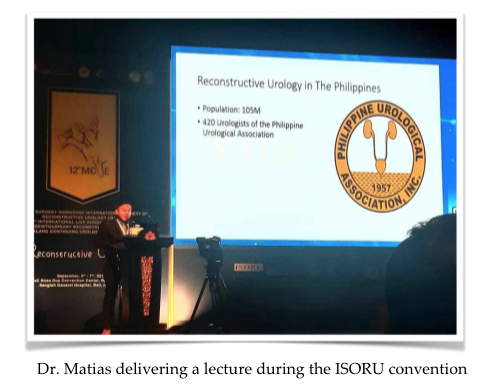
Recognizing the need to form a society dedicated to the practice of reconstructive urology, Drs. Bolong and Gatchalian gathered urologists from all across the country who were willing to learn and train in reconstruction. Some of the invitees were fresh graduates from their respective residency training programs while the others were established attending physicians in the field of pediatric urology. Among these pediatric urologists were Dr. Carlo Bisnar, Dr. Jun Dy, Dr. Pavio Buac, and Dr. Bolong himself. These mixed group of young and seasoned urologists would later on become the founding members of what would become as the Philippine Society of Genitourinary Reconstructive Surgeons (PhilGURS).
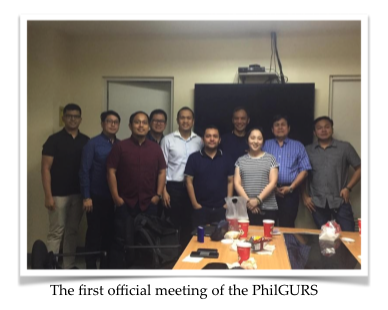
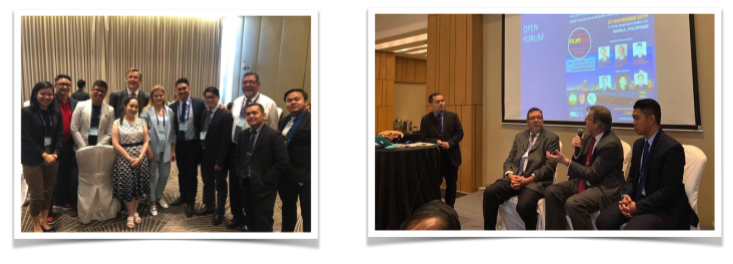
This event also marked the first time that another young Filipino reconstructive surgeon made an appearance in a PhilGURS event. Dr. Michael Chua was an alumnus of the St. Luke’s Medical Center Residency Training Program who later on went to the US to train in reconstructive urology at the Eastern Virginia Medical School under the tutelage of then GURS president Kurt McCammon. Specializing in both pediatric and reconstructive urology, Dr. Chua was a welcome addition to the growing roster of reconstructive urologists in the Philippines.
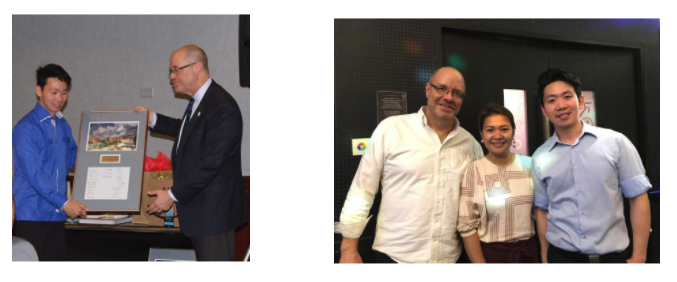
The year 2019 culminated in the induction of the Philippine Society of Genitourinary Surgeons as an official subspecialty society of the Philippine Urological Association. Professor Martins was present to witness the event and he presided over the oath-taking of the first-ever batch of PhilGURS officers. Dr. Bolong was sworn in as its first-ever president.
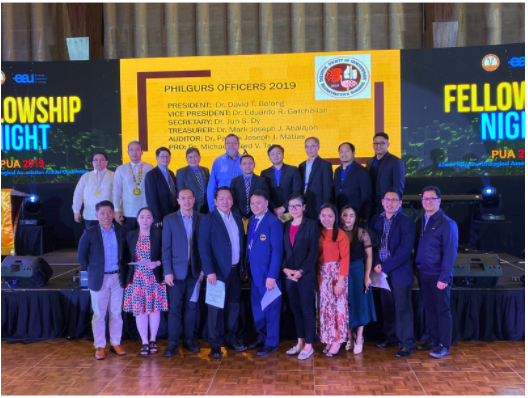
President: David Bolong MD
Vice President: Eduardo Gatchalian MD Secretary: Jun Dy MD
Treasurer: Mark Joseph Abalajon MD Auditor: Patrick Joseph Matias MD PRO: Michael Alfred Tan MD
Building on the Momentum
Determined to spread the correct practice of urologic reconstruction all across the country, the more seasoned members of the PhilGURS would travel to the provinces to teach those who were willing to learn. Live demonstrations and operative teaching sessions were scheduled to help educate general urologists on the various principles of reconstruction.
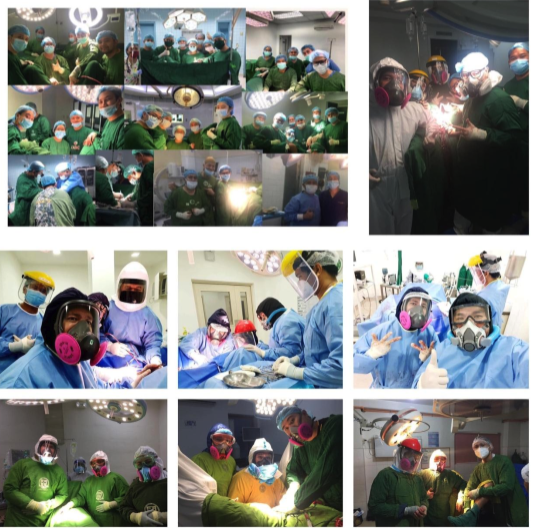
To further familiarize themselves with the various basic reconstructive techniques, the younger PhilGURS members took it upon themselves to travel abroad and learn from the masters as well. Doctors Irene Descargar, Melinda Gabales, Claudette Calata, and Paulo Omaña travelled to Pune, India to attend Professor Kulkarni’s workshops. (2020)
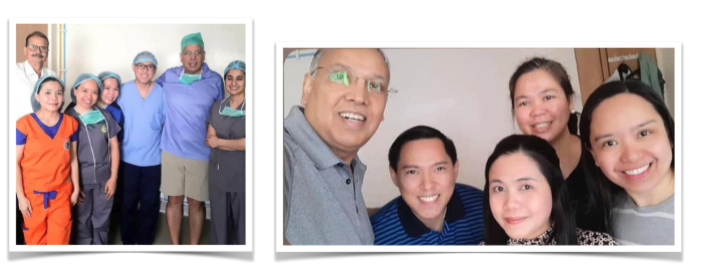
Dr. Luis Balajadia, a graduate of the Southern Philippines Medical Center decided to travel to Malang, Indonesia to learn from Dr. Satyagraha. After his training, we went back to his home city of Davao to become part of the urology consultant staff at SPMC. This was a good decision as Mindanao had no reconstructive urologist and the hospital was the largest referral system in southern Philippines.
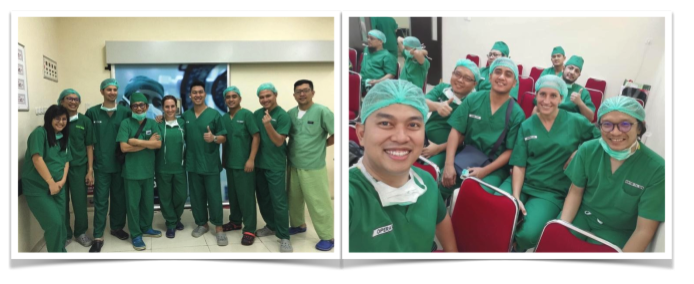
Dr. Luis Balajadia, a graduate of the Southern Philippines Medical Center decided to travel to Malang, Indonesia to learn from Dr. Satyagraha. After his training, we went back to his home city of Davao to become part of the urology consultant staff at SPMC. This was a good decision as Mindanao had no reconstructive urologist and the hospital was the largest referral system in southern Philippines.
Learning the Era of the Pandemic
The COVID-19 crisis brought about major changes in how medicine was taught. Gone were the days that live workshops were conducted face-to-face with an audience. Recognizing the need to adapt, the different training institutions and societies started resorting to webinars as the main mode of teaching. In light of this change, PhilGURS started collaborating with different institutions and PUA chapters to continue the mission of spreading the gospel of reconstruction. This included the hugely successful collaboration with East Avenue Medical Center, with their postgraduate course “Stars of Reconstruction”. This webinar series featured some of the biggest names in the field including Professor Sanjay Kulkarni himself. He was joined by current GURS Board Members Dr. Dmitriy Nikolavsky (New York, USA) and Dr. Pankaj Joshi (Pune, India). Also part of the panel were the heads of high-volume referral systems, Justin Chee (Melbourne, Australia) and Krishnan Venkatesan (Washington DC, USA). Attended by more than 500 registrants, over a span of two days, this event further increased the popularity of reconstructive urology as a legitimate subspecialty field of urology.
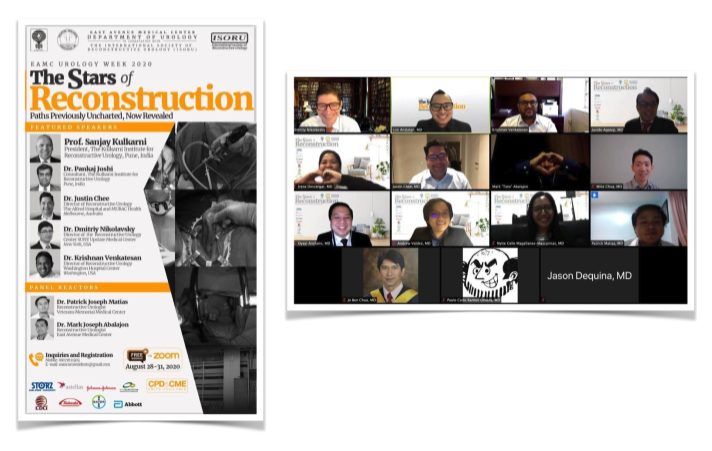
With no end to the pandemic in sight, in the immediate future, the Philippine Urological Association decided to have its first ever all-virtual annual convention, towards the end of November 2020. Again, the PhilGURS was at the forefront of that change with another webinar which was met with overwhelmingly positive reviews by both local and international audience
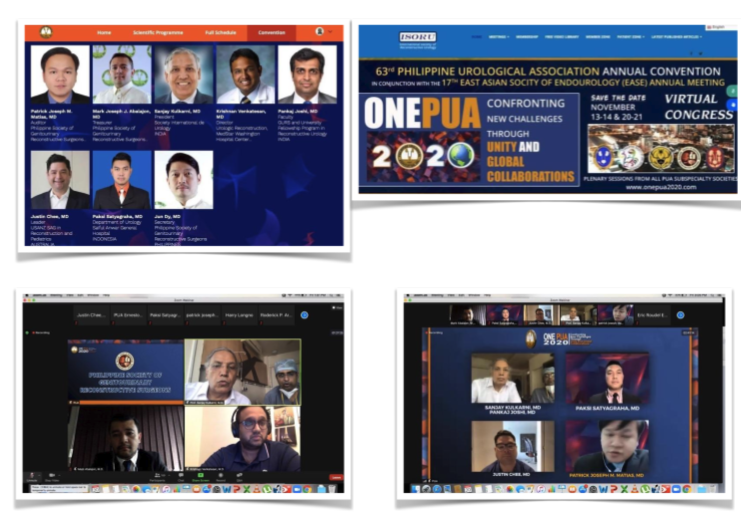
EAU-Philippine Chapter
Having established strong ties with the European Association of Urology (EAU) and building on this relationship, the Philippines was granted a chapter of the EAU, thus establishing the EAU-Philippine Chapter in 2019. Part of this partnership was the 1st ever Southeast Asia Urology Residents Education Program (SEA-UREP) which aimed to give lectures for residents
from various southeast asian countries, on various fields of urology. This was a well- received featuring faculty from europe and the asian region. In 2020, the 2nd SEA-UREP featured Reconstructive Urology for the first time. PhilGURS had an active participation in the said event with Dr. Abalajon joining Professor Christopher Chapple (UK) and Professor Luis Martinez-Peñeiro (Spain) in the panel.

The First Batch
The highlight of the entire event was the induction of the first ever batch of fellows of the Philippine Society of Genitourinary Reconstructive Surgeons, with Professor Kulkarni administering the oath to all inductees. This milestone event was a reflection of how far the subspecialty has grown since its infancy in the 1970’s. The influx of new blood will ensure that the practice of reconstruction will continue to improve in the future for the benefit of all Filipinos in need of surgical treatment in this field of urology.
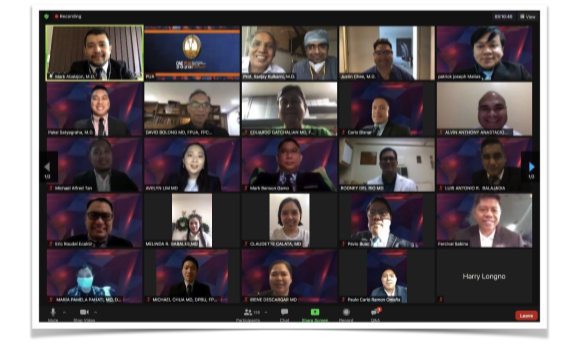
2020 Inducted Fellows:
- David Bolong MD – Maria Pamela Pahati MD
- Eduardo Gatchalian MD – Eric Roudel Ecalnir MD
- Lester Garcia MD – Paulo Carlo Ramon Omaña MD
- Jun Dy MD – Alvin Anthony Anastacio MD
- Mark Joseph Abalajon MD – Fercival Sabino MD
- Patrick Joseph Matias MD – Irene Descargar MD
- Michael Alfred Tan MD – Mark Benson Gamo MD
- Pavio Buac MD – Claudette Calata MD
- Carlo Bisnar MD – Melinda Gabales MD
- Rodney Del Rio MD – Luis Antonio Balajadia MD
- Michael Chua MD – Robert Leeh Pedragosa MD
- Sigfred Ian Alpajaro MD – Avelyn Lim MD
Future Directions
“To begin with the end in mind means to start with a clear understanding of your destination. It means to know where you’re going so that you better understand where you are now and so that the steps you take are always in the right direction.”
– Stephen R. Covey
Our vision is to be a globally recognised society in the field of Reconstructive led by dynamic and prolific members who will be renowned for their significant contributions through published literatures and technical advancements in the field.
By the year 2021, the society plans to publish on the incidence and epidemiology of urethral stricture disease headed by Dr. Abalajon. The society also intends to start the formulation of guidelines on the management of urethral strictures which will serve as the fundamental basis for the creation
of prospective studies on the subject and as a guide for general urologists. In the next few years, the society aims to lay down the foundations of a centre of excellence which will serve as a fellowship training institution for genitourinary reconstruction and referral center of the most complicated cases from all over the country. Through this center, the society also seeks to gather data and publish its results, as well as introduce innovative techniques and instruments that w i l l b e n e fi t n o t o n l y reconstructive urologists but also general urologists as a whole.
In the interim, the society vows to continue its objective of educating general urologists of the importance of adherence to principles and proper management of reconstructive genitourinary cases either by local and international fora or through actual patients referred to any of its members.



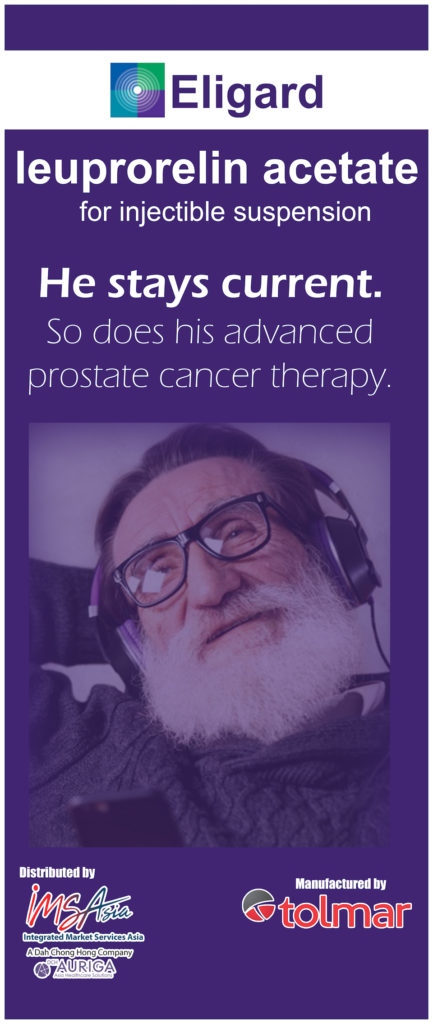
0 Comments